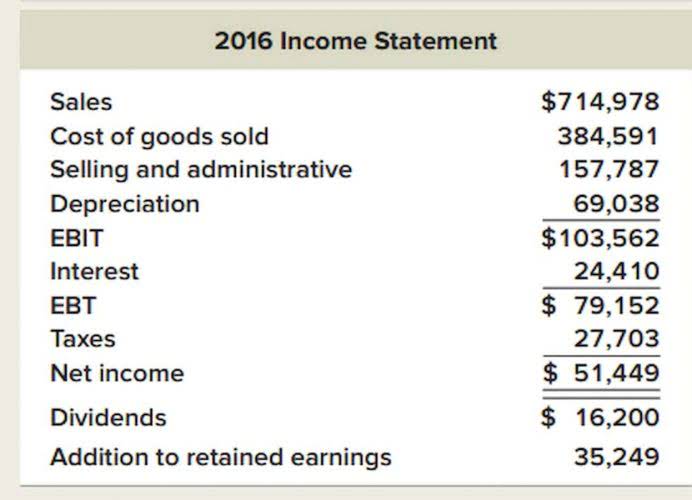Bookkeeping
Accounting for Governmental and Nonprofit Organizations UC Davis Continuing and Professional Education

Once adopted, organizations monitor actual financial performance against budgeted figures, identifying variances and implementing corrective measures. For example, if donation revenues fall short, a nonprofit may adjust program spending or explore alternative funding. Government-wide financial reporting is a critical aspect of transparent and accountable financial reporting for state and local governments. It provides stakeholders with a comprehensive view of a government’s financial health and activities. This module outlines the steps involved in preparing the government-wide Statement of Net Position and the government-wide Statement of Activities from trial balances and supporting documentation.
Budgetary Compliance and Control

This ensures compliance with donor or grantor stipulations, enhancing accountability and transparency. This article explores the core aspects of governmental and nonprofit accounting, including fund accounting, budgetary control, revenue recognition, financial statements, grant management, cost allocation, and performance metrics. Adopting effective revenue recognition practices is essential for maintaining the financial integrity of nonprofits. It ensures that financial statements accurately reflect the organization’s financial position, enabling stakeholders to make informed decisions.
Governmental and Nonprofit Accounting, 11th edition

Specialized accounting software is often used to track expenses and generate required financial reports. Periodic audits verify compliance and identify discrepancies or potential areas for improvement, helping nonprofits maintain the trust of funding partners and secure continued financial support. In summary, governmental accounting is essential for the efficient and transparent management of public funds. It differs from corporate accounting in principles, reporting, and focus, prioritizing public accountability and budgetary discipline.
governmental and Non profit Accounting chapter 1
- It states that generally accepted accounting principles such as PFRS can be applied to NPOs, with some modifications to terminology and equity presentation.
- To apply for aid, select „Learn more and apply“ in the Financial Aid section below the „Enroll“ button.
- This course doesn’t have a 7-day full access free trial, but you can audit video lectures and some course content for free.
- In this module, you will get a better understanding of the difference between private foundations and public charities.
- They help organizations generate revenue, such as through service fees or investment returns.
- Because of this, some students have difficulty grasping both the concepts underlying the modified accrual basis/financial resources measurement focus used in governmental-type funds and the accounting and financial reporting implications.
This feature is handy for non-profits and government entities that must adhere to strict budgeting and financial reporting standards. Governmental entities report to broader stakeholders, including taxpayers, legislative bodies, and creditors. Their reports must demonstrate legal compliance and accounting for governmental and nonprofit organizations financial responsibility, often focusing on how public funds are allocated and used in various programs and services.
Are you a new instructor to Cambridge Business Publishers?
- Fund Financial Statements focus on individual funds within the governmental entity, crucial for understanding specific funds’ financial performance and position.
- Understanding government and nonprofit accounting practices is essential for stakeholders who rely on accurate financial information for decision-making.
- Government-wide financial reporting is a critical aspect of transparent and accountable financial reporting for state and local governments.
- The Financial Accounting Standards Board (FASB) provides guidelines through its Accounting Standards Codification (ASC) 958, specifically tailored for nonprofits.
- Students have the first week of class to enroll with the understanding that students who enroll after the first day of class are expected to reach out to their instructors to make sure they receive all content and are on track with the course.
Understanding grant and contract accounting intricacies is essential for ensuring compliance and maintaining funders’ trust. Government and nonprofit accounting ensures transparency, accountability, and efficient resource use. Unlike for-profit entities, these organizations operate under financial principles tailored to How to Run Payroll for Restaurants their specific objectives and stakeholders.

The primary reports are the Statement of Financial Position, Statement of Activities, and Statement of Cash Flows. Navigating grant and contract accounting in nonprofits involves understanding the intricate terms and conditions set by funding entities. These agreements often dictate specific deliverables, timelines, and financial reporting requirements. Managing multiple grants and contracts can pose challenges, necessitating a robust accounting framework to ensure compliance and proper fund allocation. It’s the backbone of any organization, ensuring accurate financial reporting and compliance with legal requirements. Through accounting, businesses track their income, expenses, and overall financial health.

Module 2: Financial Reporting for State and Local Government Part I
- The MD&A typically has quite a bit more content than the managerial discussions found in the annual reports of business organizations.
- Governmental reporting emphasizes accountability over profitability, focusing on demonstrating how funds are managed to achieve public objectives.
- Dr. McDonough’s research primarily addresses governmentalaccounting, auditing, and standard-setting topics.
- This method allows governments to demonstrate compliance with legal and regulatory requirements, ensuring that resources are used as intended by law and policy.
- Transparent reporting fosters stakeholder confidence by demonstrating prudent financial management.
Implementing cost allocation software like Prophix or IBM Planning Analytics facilitates these processes, enabling accurate cost allocation and streamlined financial reporting. Tammy R. Waymire, PhD, CPA, is the MTSU Accounting Advisory Board Outstanding Professor of Accounting at the Jennings A. Jones College of Business at Middle Tennessee State University in Murfreesboro, TN. She teaches undergraduate and graduate governmental and nonprofit accounting courses and intermediate accounting. She received her bachelor’s degree from Arkansas Tech University, her MBA from Harding University, and her PhD from the University of Arkansas. Imagine you’re running a non-profit organization focused on environmental conservation. Your expenditure fund will meticulously track every dollar spent on planting trees and maintaining the project site, ensuring transparency and accountability.
![]()
The Statement of Functional Expenses, a key component of nonprofit financial reporting, further breaks down expenses by function, enhancing https://biblicalromance.co.za/2021/08/23/bookkeeping-services-for-small-businesses-1-for/ transparency and accountability. Budgetary control and reporting are foundational to the financial health of governmental and nonprofit organizations. Robust budgeting systems align financial resources with organizational goals, ensuring expenditures do not exceed allocated funds. A structured budgeting process supports strategic planning and resource allocation, crucial for maintaining financial stability and achieving long-term objectives. Navigating the complexities of revenue recognition in nonprofits requires understanding both accounting principles and the unique nature of nonprofit funding sources. Nonprofits often receive revenues from various sources, including donations, grants, membership fees, and program service fees.

